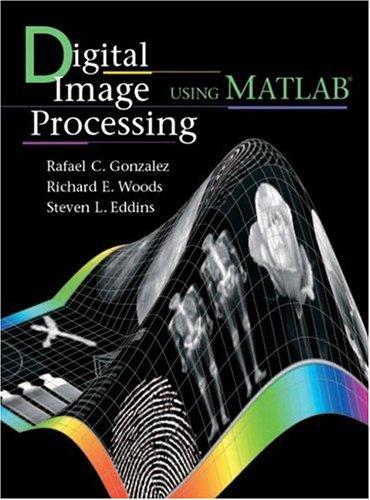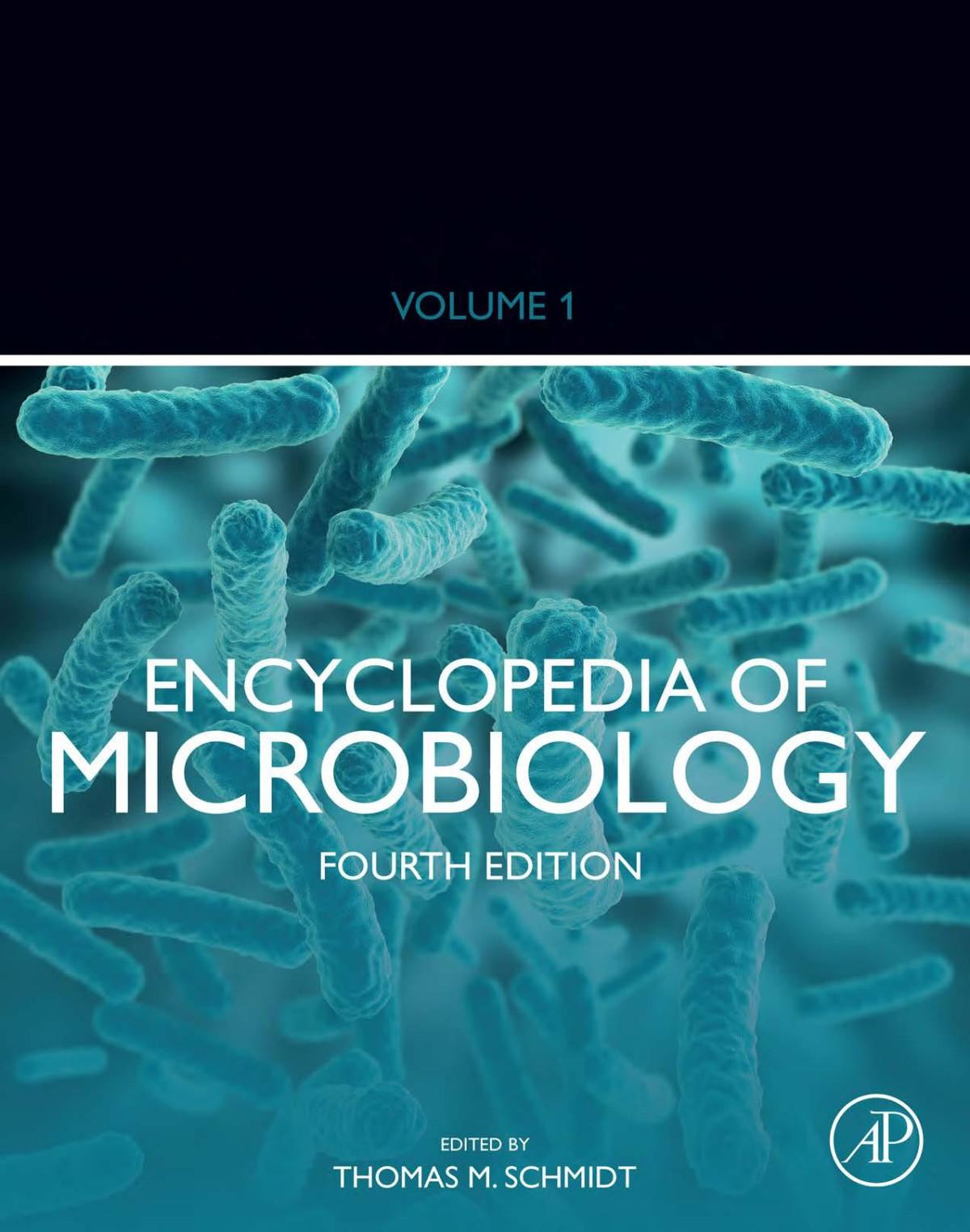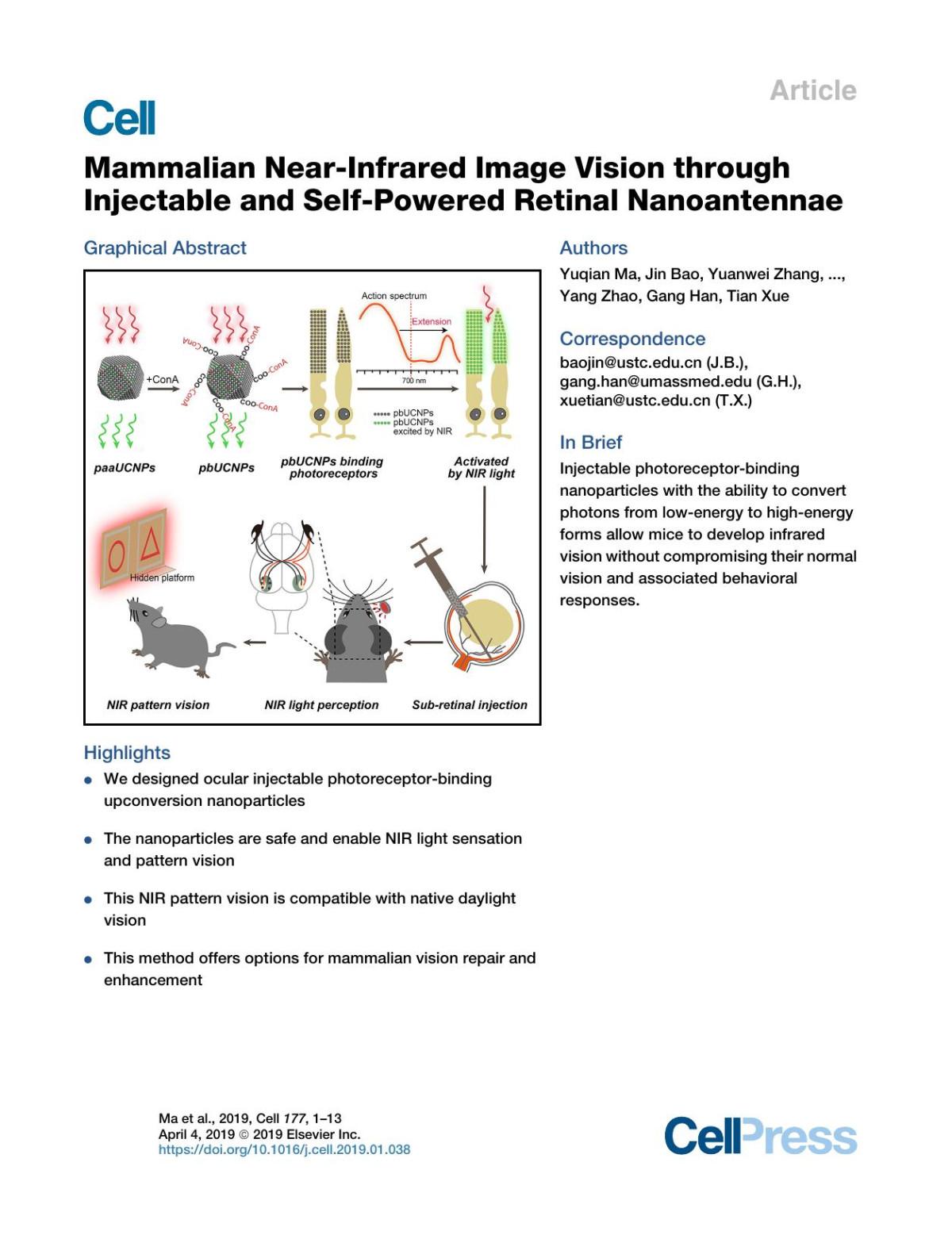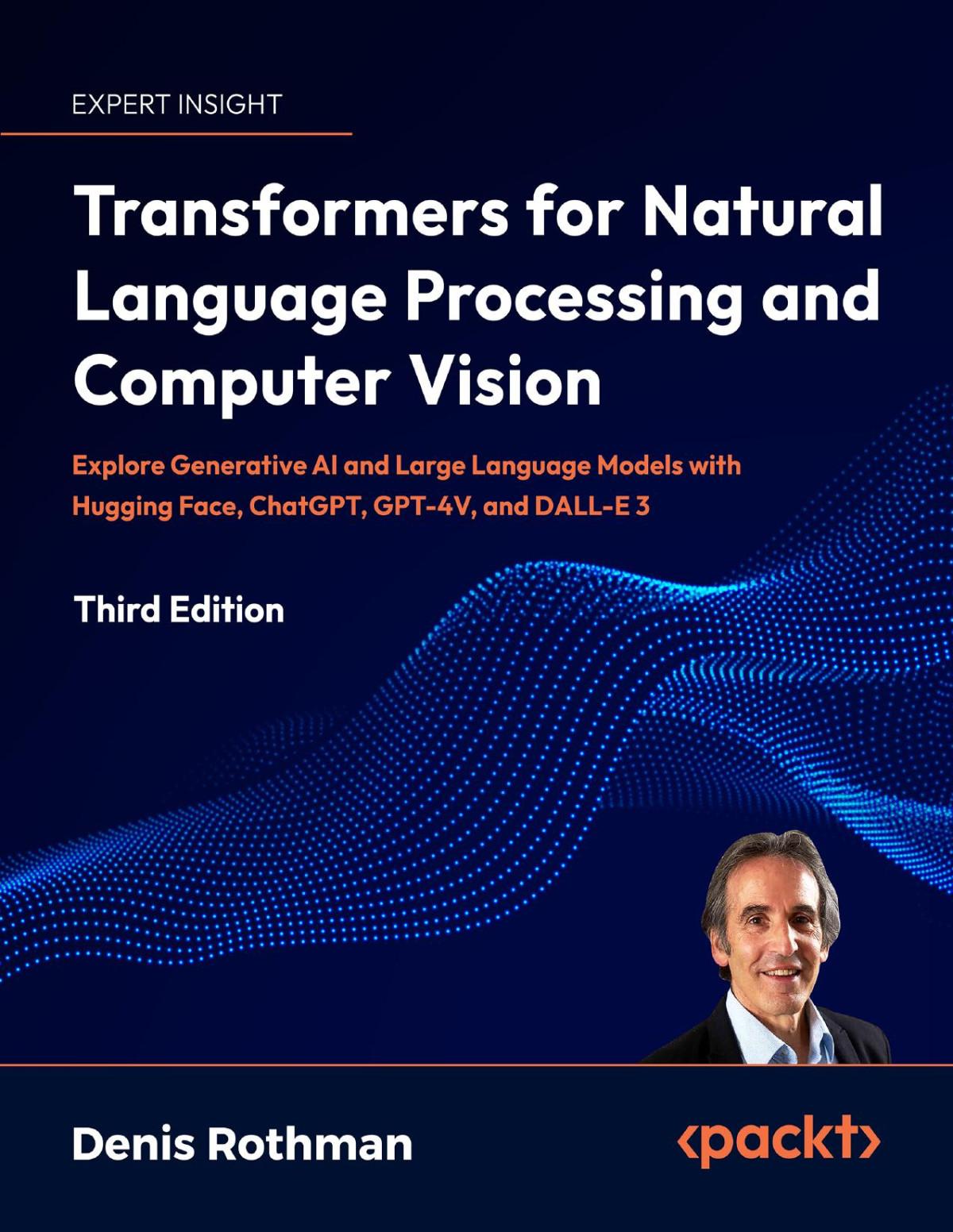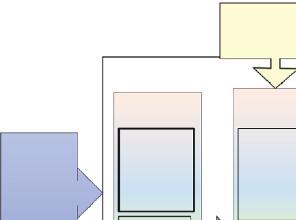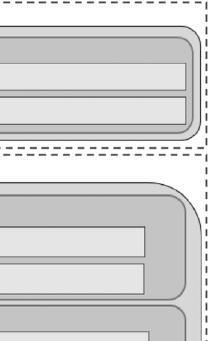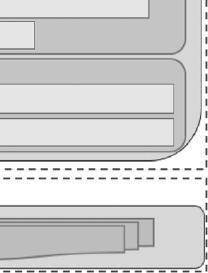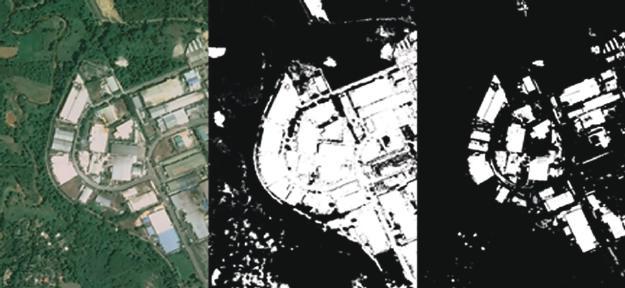systems.
Visit to download the full and correct content document: https://ebookmass.com/product/machine-vision-inspection-systems-vol-1-image-proc essing-concepts-malarvel-m-ed/
More products digital (pdf, epub, mobi) instant download maybe you interests ...
Machine Vision Inspection Systems, Machine LearningBased Approaches Muthukumaran Malarvel
https://ebookmass.com/product/machine-vision-inspection-systemsmachine-learning-based-approaches-muthukumaran-malarvel/
Feature extraction and image processing for computer vision Fourth Edition Aguado
https://ebookmass.com/product/feature-extraction-and-imageprocessing-for-computer-vision-fourth-edition-aguado/
Machine Learning Algorithms for Signal and Image Processing Suman Lata Tripathi
https://ebookmass.com/product/machine-learning-algorithms-forsignal-and-image-processing-suman-lata-tripathi/
Machine Intelligence, Big Data Analytics, and IoT in Image Processing Ashok Kumar
https://ebookmass.com/product/machine-intelligence-big-dataanalytics-and-iot-in-image-processing-ashok-kumar/
Digital Image Processing Using MATLAB Rafael C.
Gonzalez
https://ebookmass.com/product/digital-image-processing-usingmatlab-rafael-c-gonzalez/
Graph Spectral Image Processing Gene Cheung
https://ebookmass.com/product/graph-spectral-image-processinggene-cheung/
Encyclopedia of Microbiology, vol.1 4th Edition Edition
Thomas M. Schmidt
https://ebookmass.com/product/encyclopedia-of-microbiologyvol-1-4th-edition-edition-thomas-m-schmidt/
Mammalian Near-Infrared Image Vision through Injectable and Self-Powered Retinal Nanoantennae Yuqian Ma & Jin
Bao & Yuanwei Zhang & Zhanjun Li & Xiangyu Zhou & Changlin Wan & Ling Huang & Yang Zhao & Gang Han & Tian
Xue
https://ebookmass.com/product/mammalian-near-infrared-imagevision-through-injectable-and-self-powered-retinal-nanoantennaeyuqian-ma-jin-bao-yuanwei-zhang-zhanjun-li-xiangyu-zhou-changlinwan-ling-huang-yang-zhao/
Transformers for Natural Language Processing and Computer Vision, Third Edition Denis Rothman
https://ebookmass.com/product/transformers-for-natural-languageprocessing-and-computer-vision-third-edition-denis-rothman/
Scrivener Publishing
100 Cummings Center, Suite 541J Beverly, MA 01915-6106
Publishers at Scrivener
Martin Scrivener (martin@scrivenerpublishing.com)
Phillip Carmical (pcarmical@scrivenerpublishing.com)
Image Processing, Concepts, Methodologies and Applications
Edited by Muthukumaran Malarvel,
Soumya Ranjan Nayak, Surya Narayan Panda, Prasant Kumar Pattnaik and Nittaya Muangnak
This edition first published 2020 by John Wiley & Sons, Inc., 111 River Street, Hoboken, NJ 07030, USA and Scrivener Publishing LLC, 100 Cummings Center, Suite 541J, Beverly, MA 01915, USA © 2020 Scrivener Publishing LLC
For more information about Scrivener publications please visit www.scrivenerpublishing.com.
All rights reserved. No part of this publication may be reproduced, stored in a retrieval system, or transmitted, in any form or by any means, electronic, mechanical, photocopying, recording, or otherwise, except as permitted by law. Advice on how to obtain permission to reuse material from this title is available at http://www.wiley.com/go/permissions.
Wiley Global Headquarters
111 River Street, Hoboken, NJ 07030, USA
For details of our global editorial offices, customer services, and more information about Wiley products visit us at www.wiley.com.
Limit of Liability/Disclaimer of Warranty
While the publisher and authors have used their best efforts in preparing this work, they make no representations or warranties with respect to the accuracy or completeness of the contents of this work and specifically disclaim all warranties, including without limitation any implied warranties of merchantability or fitness for a particular purpose. No warranty may be created or extended by sales representatives, written sales materials, or promotional statements for this work. The fact that an organization, website, or product is referred to in this work as a citation and/or potential source of further information does not mean that the publisher and authors endorse the information or services the organization, website, or product may provide or recommendations it may make. This work is sold with the understanding that the publisher is not engaged in rendering professional services. The advice and strategies contained herein may not be suitable for your situation. You should consult with a specialist where appropriate. Neither the publisher nor authors shall be liable for any loss of profit or any other commercial damages, including but not limited to special, incidental, consequential, or other damages. Further, readers should be aware that websites listed in this work may have changed or disappeared between when this work was written and when it is read.
Library
of Congress Cataloging-in-Publication
Data
Names: Malarvel, Muthukumaran, editor. | Nayak, Soumya Ranjan, 1984–editor. | Panda, Sury Narayan, editor. | Pattnaik, Prasant Kumar, 1969–editor. | Muangnak, Nittaya, editor.
Title: Machine vision inspection systems / edited by Muthukumaran Malarvel, Soumya Ranjan Nayak, Sury Narayan Panda, Prasant Kumar Pattnaik and Nittaya Muangnak.
Description: Hoboken, NJ : Wiley-Scrivener, 2020. | Includes bibliographical references and index. | Contents: Volume 1. Image processing, concepts, methodologies and applications –
Identifiers: LCCN 2020020076 (print) | LCCN 2020020077 (ebook) | ISBN 9781119681809 (hardback) | ISBN 9781119681960 (adobe pdf) | ISBN 9781119682097 (epub)
Subjects: LCSH: Computer vision. | Computer vision–Industrial applications. | Engineering inspection–Automation. | Image processing. | Image processing–Digital techniques.
Classification: LCC TA1634 .M3354 2020 (print) | LCC TA1634 (ebook) | DDC 006.3/7–dc23
LC record available at https://lccn.loc.gov/2020020076
LC ebook record available at https://lccn.loc.gov/2020020077
Cover image: Pixabay.Com
Cover design by Russell Richardson
Set in size of 11pt and Minion Pro by Manila Typesetting Company, Makati, Philippines
Printed in the USA
3
Sarojananda
4
5.3.2
5.2.2.4
5.4.1
5.4.2
5.4.3
5.3.2.1
Preface
This edited book aims to bring together leading researchers, academic scientists and research scholars to put forward and share their experiences and research results on all aspects of an inspection system for detection analysis for various machine vision applications. It also provides a premier interdisciplinary platform for educators, practitioners and researchers to present and discuss the most recent innovations, trends, methodology, applications and concerns, as well as practical challenges encountered and solutions adopted in the inspection system in terms of image processing and analytics of machine vision for real and industrial application. The book is organized into ten chapters,
Chapter 1 presents an overview of an automated methodology-based learning model classification technique for identifying the usage and coverage of land use in Sri Lanka by using satellite imagery data. This chapter also discusses the issue related to manual surveys and its limitations about the land-use of different regions.
Chapter 2 focuses on the Indian sign language recognition using machine learning algorithm in machine vision and pattern recognition research areas. The work is to translate acquired images or videos either offline or online to corresponding words, numbers or sentences representing the meaning of the input sign. The Direct Pixel Value, Hierarchical Centroid, Local Histogram features of Image Processing techniques are used as a feature in the experimental analysis. The classifiers used here are k-Nearest Neighbour and Neural Network.
Chapter 3 presents an unmanned aerial vehicle (UAV) assist the pest detection model to track pests in the stored grain (SG). This proposed model consists of four phases such as data acquisition, edge detection, feature extraction, and pest identification. In this model, the edge detection (ED) phase is focused on analyzing the data (pest in the SG images). Many standard edge detection (SED) methods such as Sobel, Prewitt, Roberts, Morphological, Laplacian of Gaussian (LoG), Canny etc. are used to track the shape, location, and quantity of pests in SG. The implementation of the
methods are performed using MATLAB R2015b and evaluated using signal to noise ratio (SNR), peak signal to noise ratio (PSNR), and processing time (PT).
Chapter 4 describes object selection as a trade-off between performance and accuracy. Particularly, in machine vision time versus precision for object selection plays a crucial role in image analysis is addressed. These regions are a group of segmented pixels that are used for processing. Such regions are often represented by numbers called “object descriptors”. Using such data, the authors compare and distinguish objects by matching the descriptors. Without loss of generality, these descriptors have certain properties like (a) invariance against geometrical transformations like translation, rotation and scaling, (b) Stability to noise and non-rigid local deformation, (c) Completeness.
Chapter 5 explores flood control and disaster management technologies based on image processing and machine learning. The main objective of this chapter is to develop an understanding of the flood risks, explore the existing systems for managing the risks and devise a flood management model through machine vision. Furthermore, this chapter discusses the limitations of the current technologies and suggests a reliable model to overcome the problems. Finally, this chapter elaborates on the system of how to detect flood-affected areas and determine rescue routes.
Chapter 6 discusses the color changes on the avocado dip under microwave conditions through the machine vision approach. This chapter analyzes the change of color in a* - b* space in terms of different treatments. Also, this chapter discusses real-time experimental analysis by various parameters.
Chapter 7 deliberates the defect detection on defective roads and bridges through computer vision-based techniques. This chapter discusses the basic steps involved in defect detection using image processing along with existing systems and presents the pros and cons of the different existing methods in terms of performance. Also, this chapter applies multiple image processing techniques to solve the various types of defects.
Chapter 8 presents the study and conducts experiments through machine vision techniques on diabetic retinopathy disease present in retinal fundus images. This chapter also discusses various factors of the disease that appears in the image and discusses the possible solutions in terms of image processing techniques. An effective analysis is shown for computer-aided solutions.
Chapter 9 provides a robust method to solve the ambiguities in handwritten the OCR system. This has been resolved using the Convolutional Neural Network (CNN) based approach. This state-of-the-art of
CNN-based approach for recognition of multiple handwritten numerals of various scripts is clearly shown here. It is also quite helpful to report the discriminate features of each individual and later lead to reporting a high recognition rate. At the simulation level we have listed the variance nature of the individual’s images and through CNN we have reported a high recognition rate, which is quite helpful in building the automatic recognition system for handwritten numerals to have the solution for realtime problems.
Chapter 10 presents a detailed review of some of the attempts towards avoiding, detecting and preventing phishing in terms of visual methods. This chapter explains the frauds and criminal activities on phishing and, moreover, discusses the various solutions approached in recent years. Additionally, this chapter reviews the role of training and education on the reduction of phishing victims.
We have to start by thanking God Almighty for giving us the ability and opportunity to undertake to edit this book and to complete it satisfactorily. Completion of this book could not have been accomplished without the support of all editors starting from the “Call for Chapters” till their finalization. All the contributors have given their contributions amicably and is a positive sign of significant teamwork. The editors are sincerely thankful to all the members of Scrivener Publishing especially Martin Scrivener for providing constructive inputs and allowing an opportunity to edit this important book. We are equally thankful to all reviewers who hail from different places in and around the globe shared their support and stand firm towards quality chapter submissions. Finally, we are eternally grateful to the authors for contributing quality chapters.
Muthukumaran Malarvel
Soumya Ranjan Nayak
Surya Narayan Panda
Prasant Kumar Pattnaik
Nittaya Muangnak April 2020
D.
1 Land-Use Classification with Integrated Data
A. Meedeniya*, J. A. A. M Jayanetti, M. D. N. Dilini, M. H. Wickramapala and J. H. Madushanka
Department of Computer Science and Engineering, University of Moratuwa, Sri Lanka
Abstract
The identification of the usage and coverage of the land is a major part of regional development. Crowdsourced geographic information systems provide valuable information about the land use of different regions. Although these data sources lack reliability and possess some limitations, they are useful in deriving building blocks for the usage of the land, where the manual surveys are not up-to-date, costly, and time consuming. At present, in the context of Sri Lanka, there is a lack of reliable and updated land-use data. Moreover, there is a rapid growth in the construction industry, resulting in frequent changes in land-use and land-cover data. This paper presents a novel and an automated methodology based on learning models for identifying the usage and coverage of the land. The satellite imagery is used to identify the information related to land cover. They are integrated with Foursquare venue data, which is a popular crowdsourced geographic information, thus, enhancing the information level and the quality of land-use visualization. The proposed methodology has shown a kappa coefficient of 74.03%, showing an average land-use classification accuracy within a constrained environment.
Keywords: Geographic information system, land-cover identification, landuse classification, social computing, decision support system, satellite images, Foursquare data
*Corresponding author: dulanim@cse.mrt.ac.lk
Muthukumaran Malarvel, Soumya Ranjan Nayak, Surya Narayan Panda, Prasant Kumar Pattnaik and Nittaya Muangnak (eds.) Machine Vision Inspection Systems (Vol. 1): Image Processing, Concepts, Methodologies and Applications, (1–36) © 2020 Scrivener Publishing LLC
1.1 Introduction
Regional planning and management are major concerns in the development strategy of a country. The information related to the coverage and usage of lands can be used to extract the features in an area and facilitate development activities. The land-use data are related to human activities, whereas the land-cover information represent the natural features and artificial constructions on the earth surface. Crowdsourced geographic information systems provide valuable information about the land use of different regions. At present, up-to-date data on land usage and coverage are not available for all the cities in Sri Lanka. This is due to the cost of labor, lack of the required technologies, and resources associated with the data surveys. Unavailability of a cost-effective way of obtaining such latest and reliable data is a bottleneck to the long-term planning and development of a region. This results in unplanned ad hoc developments, construction of unhealthy residential areas, deterioration of service and infrastructure, environmental pollution, increased traffic congestion, and so on [1], which can be widely seen in many urban areas in Sri Lanka. Therefore, up-to-date data on the usage and coverage of land are important to make strategic decisions on sustainable region planning.
The objective of this research is to design and develop a support system to classify the land-cover and land-use data using Google Satellite imagery [2] and Foursquare data, which is a type of volunteer geographic information (VGI), respectively [3]. The system produces a visualization of different types of land-use in each area (eg. residential, industrial, commercial, agriculture etc.) on a land-use map based on heterogeneous data sources including crowdsourced Foursquare data. Acquiring data on land cover and land use from different data types, which can be integrated into the classification system, will enhance the quality of the processed information [4].
Therefore, this research provides a novel way of identifying and classifying different forms of land-use data, specifically satellite imagery and Foursquare data, with the extensible features for other types of related data. The system refines the land-use mapping with the use of additional parameters, such as context-specific different data sources. Ultimately, the retrieved data can be used to monitor land-use changes in near real time [2]. Moreover, this study focuses on developing a common platform that enables the collaboration of heterogeneous data sources to produce enhanced land-use data. Further, this will increase the utility value of the retrieved information on land-cover and land-use, hence, widening the range of applicable applications from the results. Colombo district is selected as the study area considering the availability and sampling rates
of different data sets and issues associated with data validation [4]. The proposed land-use visualization approach identifies and classifies different forms of land cover and land use in a selected area considering the satellite imagery and Foursquare data, respectively, and displays the classification on a land-use map.
The land-use data retrieved from the proposed methodology can be used to monitor land-use changes near real time. Analysis of these detailed snapshots of land-use enables authorities to detect a change and foresee its social and environmental consequences. This, in turn, will enable them to identify long-lasting sustainable solutions to urbanization issues in Sri Lanka.
The paper is structured as follows: Section II explores the related literature and Section III presents the design architectures of the system and Section IV describes the development process with the used techniques. Section V evaluates the validity of the proposed method, and finally, Section VI summarizes the research including future work.
1.2
Background Study
1.2.1
Overview of Land-Use and Land-Cover Information
The identification of the usage and coverage of the land is a major part of regional development. Land cover and land use are often interchangeably used in many information systems, despite the distinct difference between those two terms [1, 4]. Land cover refers to observable physical properties of land, such as the areas with trees, grounds, building, roads, water, and so on. On the other hand, land use refers to purposes for which lands are being used, such as residential, commercial, entertainment, and so on. It may be difficult to determine the actual purpose for which land is being used by solely using the information produced by a source of observation. For example, in the absence of additional information sources, it may be difficult to decide whether grasslands are used for agricultural activities or not. Moreover, there is a rapid growth in the construction industry, resulting in frequent changes in land-use and land-cover data.
As a summary, the land coverage and usage data are important to identify correctly and process timely manner in order to make decisions on regional development. However, it is challenging to obtain large-scale, latest data from reliable sources. The unplanned constructions may impact the region with unprogressive infrastructure, unhealthy residentials, and environment issues, such as traffic congestion and pollution.
1.2.2 Geographical Information Systems
A Geographical Information Systems (GIS) facilitates collection, store, process, analyze, and visualize data on the surface of the earth. Prior to the discovery of advanced technologies and concepts, a GIS primarily consisted of a database management system (DBMS) and a set of tools that allowed data to be retrieved from the DBMS. With the advent of the Internet and Web-based applications, as well as the increased utilization of mobile devices, the traditional notion of a GIS has been altered significantly. Particularly, the user base of GISs has expanded from traditional users, such as relevant public and private sector to just about anyone who uses an application built on top of a GIS in their mobile or other electronic devices.
Even though the primary functions, such as data storage, retrieval, visualization, and so on, are common to all GISs, the nature of these functions depends largely on the underlying application. Based on the area of application, GIS can be classified into different information system types, such as cadastral, land and property, image-based, natural resource management, spatial information systems, and so on.
The GIS can be used to find solutions to a wide variety of problems, such as determining and predicting the features of a particular location, identifying locations with particular characteristics, monitoring change over periods, determining the best route between different locations, modeling environmental and societal evolution over time, crime location mapping, disaster management, transportation planning, management, and so on.
1.2.3 GIS-Related Data Types
1.2.3.1
Point Data Sets
Point data are used to represent discrete data points that have no adjacent features. For example, in a GIS, the location of a place can be represented by a point location. The GIS data are of two categories, the spatially referenced data and the attribute data table associated with it. The spatially referenced data are represented in vector and raster forms. Foursquare data [3, 5] and OpenStreetMap data [6] are two popular GIS point data sources that can be utilized for the identification of land-use utilization at a detailed level.
Foursquare [3, 5] is a mobile-based social networking service that facilitates to acquire user-location information using check-in and search history; and recommend places near the user’s current location. These data contain the names, locations, and types of places. When providing
recommendations, the application makes use of its citizen-contributed database, the places a user goes, and the advice and comments given by other users on a place. This is a volunteered/crowdsourced VGI, that uses geographic data provided by the users. Thus, Foursquare data are used to identify land-use information with proper quality validation and consumes a low-cost mechanism.
OpenStreetMap [6] is a popular GIS data source that provides geographic data. This presents the physical features within a given area, such as commercial buildings, roads, waterways, railways, highways, and amenities using tags, and each of those tags describes a geographical attribute. Moreover, OpenStreetMap releases map data under a free and open license, which makes them available for researchers and as a data validation source.
1.2.3.2 Aerial Data Sets
An aerial data set is prepared by means of airborne methods and aerial photographs and Google satellite imagery some examples [2]. Satellite images of the Earth’s surface captured by remote-sensing techniques have proven to be a useful data source for many research studies and applications in diverse fields [2, 7]. Satellite images enable wider geographical areas to be covered quickly with relative convenience. They provide a way of monitoring the Earth’s surface, hence, eliminating the need to rely solely on labor-intensive processes, such as area frame surveys for maintaining up-to-date information on the Earth’s surface, which tends to be a slow and a tedious process. Moreover, the digital format of satellite images enables to be directly processed digitally and integrated with other data sources with relative ease. Data retrieved from satellite images are used to successfully extract the required information on the land usage for decision making and predicting systems.
High elevation aerial photographs of the Earth’s surface are a remotesensing data source. They can be used to identify the coverage of lands. These visual interpretations are also used in conjunction with satellite images, particularly to fill areas which are not clear on satellite images due to prevalent atmospheric conditions, such as cloud cover at the time of capturing those. Aerial photographs are of high spatial resolution. Therefore, these images comprise a high level of information which is useful for various analytical and reference purposes associated with land-cover classifications. The spectral range of aerial photography is narrow, and therefore, a considerable number of photographs will have to be patched together to cover wider geographical areas. Further, the cost per surface unit is higher with aerial photographs compared with satellite images.
1.2.4 Related Studies
Among the variety of research studies, the study by Quercia and Saez [5], has described the feasibility of acquiring data from the locations of social-media users, considering the mining urban deprivation information in London city. This study has addressed the reliable, latest and inferring free data retrieval, and shown the use of Foursquare data in monitoring fine-grain resolutions, which cannot be obtained from other land-use data used in practice. However, this gives an insight into the limitations of Foursquare data such as demographic and geographic biases and the Foursquare categories not being fully structured. For instance, these can be biased by the penetration rate of the Foursquare data and a given location can be named with different category types based on the thinking patterns of the users who entered the Foursquare data.
A multidata approach (MDA) is presented by Bareth [4] to generate data related to land use. They have combined the traditional types of data for land usage with the information obtained from the different remote-sensing analysis. As a first step, remote sensing data were classified using supervised classification techniques and then the quality of the classified data was assessed. The second step of the research was to import the classified data into a GIS environment and overlay them with relevant 3rd-party data sources, such as official topographic or land-use data. The importance of this approach is that it enables useful and high-quality land-use information in various spatial databases, such as spatial biotope or biodiversity databases, spatial databases of national parks, and so on to be integrated with the results of remote-sensing analysis. Further, land-use data retrieved from official data sources can be integrated to MDA for cross-checking the results of remote-sensing analysis. Also, by incorporating the results of land-cover change models to MDA, they have simulated the change scenarios for the usage and coverage of the land. According to the literature, satellite images are mainly used to identify urban land usage that covers a large area without frequent changes. However, it is challenging to obtain high-resolution images. Thus, there is a research direction toward the integration of these remote-sensing data with the social knowledge data for better analysis of the usage and coverage patterns of the land.
1.3 System Design
The primary focus of this study is to classify land usage into several categories, such as residential, hotels, restaurants, industrial, and so
on. Two data sources google satellite images for the coverage and foursquare point data for usage of the land are used for this study. First, the google satellite imagery is used to classify land-cover data that represent primitive categories, such as water, built-up, vegetation, and bare soil. Next, this output would be further differentiated using foursquare point data into the abovementioned land usage classes. Figure 1.1 shows the overall view of the proposed system.
System design mainly consists of four components. The data preprocessing component removes and purifies noises in the input data. The data classification component applies classification and clustering techniques on the preprocessed data. These results of heterogeneous data will be integrated into the data integration component. Then, data analysis component will evaluate the accuracy of the classified data. The main output of the system is a Shape file that adds a layer to Quantum Geographic Information System (QGIS). The QGIS is a free desktop application that supports different platforms. It has features to view, edit, and analyze geospatial data together with quality measures. The final system is expected to be used for urban planning and government officials who want to collect data, and so on.
Figure 1.2 shows the sequence diagram of the proposed Web application. It shows how such a user can easily retrieve the results produced by the system so that he can use this information in his respective work, such as sustainable urban development planning. First, the user will access a Web interface where he is provided with a google map. He can zoom in the map and select a rectangular area using the mouse pointer. The analyst can highlight the area from the map, which he wants the land-use classification. The common interface will send the boundaries (latitudes and
Figure 1.1 High-level design diagram.
:Common Inter face
Analyst
displayMap()
selectArea(top left, bottom_right)
get_LC_classification(latitude,longitude)
selectImages(latitude,longitude)
sendStitched_image(x)
m1-process_classification(x)
send_LC_classifiedMap(m1)
get_LU_classification(m1,latitude,longitude)
Xi=addImage(lalitude,longitude) for all Items i for all Items i
get_Venus(m1,latitude,longitude)
li=get_Location(lalitude,longitude)
send_foursquare_points_list(I)
m2=process_classification(I)
send_LU_classified_map(m2)
send_Final_Map(m2)
1.2 Process view of the land-use visualization Web application.
longitudes) of the area to the land-cover classification module, which will return the stitched image. Next, the common interface will send the landcover classified map along with the boundaries to the land usage classification module. This module will get the Foursquare locations and their respective classes from the Foursquare database, perform the land-use classification, and return the final land usage classified map to the analyst. In addition, a legend is also provided with the different categories of land usage classes, such as residential, restaurants, hotels, and so on, and their assigned colors will also appear with the final map.
Figure 1.3 shows the architectural view of the proposed system, which complies with the overall view, and the components are described with the workflow given in Figure 1.4. The module “Input Data Manager” handles the input data types to the system. The current system uses satellite images, Foursquare data, and official land-use data. The architecture is designed in an extensible feature to incorporate other data types, such as OpenStreetMap. The module “Visualization Manager” visualizes the processed Foursquare data and point location data in terms of land-use classification with a color-coded layer based on the predefined categories and described in detail in the chapter. The logical layer comprises three main
Figure
Presentation Layer
Input Data Manager
Satellite Images
OpenStreetMap Data
Foursquare DataLand use Datasets
Logical Layer
Visualization Manager
Processed Foursquare Data
Classi ed Point Locations
Data Pre -processer
Bilateral Filter
Building Block Identi er Feature Extractor
Built-up Area Separator
Common Platform Manager
CSV Converter
Land-use Type Alignment
Dataset Integrator
Learnig Model
K-means Clustering Module
Segmentation
Supervised Classi er Stage 1
Supervised Classi er Stage 2
Data Access Layer
Internal Database
External Data Sources
modules responsible to preprocess data, integrate data sources, and the learning process.
Figure 1.4 describes the workflow of the system, which is an extension of our previous work [7]. Initially, Google satellite imagery and Foursquare data of Colombo District, which contains instances of varieties of land uses were collected and preprocessed separately. The satellite imagery was subjected to bilateral filtering [8] to remove the Gaussian noise [9]. Next, edge enhancement techniques were applied to enhance the important features of satellite images, such as sharp edges, which helps to identify built-up areas. Foursquare data also need to be cleaned because they contain irrelevant and unreliable data, such as location names inserted with English and Tamil. Next, the preprocessed satellite images are classified using supervised learning techniques, such as random forest, and unsupervised classification techniques, such as k-means clustering. The foursquare point
Figure 1.3 Architectural view of the system.
Input Data
Google Satellite Imagery
Pre-Process Data
Reduce noise and smooth using Bilateral Filtering
Enhance Edges
Analyse Data Quality Foursquare Data Points
Clean Data
Remove Noise Remove Outliers
Classify Data
Classify Land-Cover Hybrid Data
Classify using Unsupervised K-means
Classify using Supervised Random Forest
Integrate Data
Separate Built-up Area
Identify Building Blocks
Remove Unreliable Data
Classify land-Use Data
Classify Foursquare Data
Assign Geometric values to Foursquare Data
Relocate Foursquare Data Points
Validate Results
Visualize Data
Land-Use Map
locations would be further differentiated into nine basic classes. Next, these two outputs will be integrated in order to produce the final land usage classified map. The common platform enables heterogeneous data sources to collaborate to produce enhanced land-use data. The implementation details are further discussed in the Implementation section.
1.4 Implementation Details
1.4.1
Materials
The data set considered for this study includes over 20,000 satellite images containing diverse features for each land-cover category. The differences in built-up areas were caused by differences in actual building structures and shapes, as well as due to lighting conditions and quality of the sensors
Figure 1.4 Workflow diagram of the system.
used for capturing the images. Further, Google satellite images only include red, green, blue (RGB) bands, and certain land features are not well represented in these bands. Thus, developing a universal approach to automatically extract built-up areas to a satisfactory degree of accuracy is challenging.
This study has used 3863 foursquare points for the study area of around 700 square kms in Colombo District, All data records were consistent and complete and followed a common format and there were no discrepancies and duplications. Each record consisted of the location data such as name, geographical coordinates, category types the place belonged to, and the number of user and the check-ins. There were 10 main categories for Foursquare data, and 354 subcategories. However, some of the subcategories were not properly categorized under the main categories. In order to overcome this issue, this study has realigned foursquare categories and subcategories into nine land-use types.
1.4.2 Preprocessing
Initially, the images are smoothened using the bilateral filter, which effectively removes Gaussian noise while preserving the edge information of the images. The bilateral filter calculates the average of pixels surrounding a pixel and replaces it with the weighted average of intensities in neighboring pixels [10]. Foursquare being a VGI data set, the reliability of data is one of the key issues. In order to remove the unreliable data, the points with a user count below a given threshold value were removed, because the degree of the unreliability of the existence of a point tends to decrease with the number of unique users checked in for a given location [2]. Irrelevant data points and the records with unreadable names due to human or application errors at data entry were removed from the data set. The associated limitations, such as the unequal distribution of point data and the insufficient Foursquare data in unpopular regions, cannot be treated with preprocessing.
1.4.3 Built-Up Area Extraction
Computer vision techniques have been used to identify rooftops from satellite imagery. However, such approaches could only be used successfully when the built-up areas adhere to images with a fixed set of features or with a given hypothesis for rooftop areas developed by the researchers. The built-up areas in the set of satellite images that were available for this study had major variations from one image to another. These variations
are partly caused by the differences in the resolution and quality of sensors that have been used to capture the images. The rest of the variations were caused by inherent differences in rooftop areas in terms of color and shape as indicated in Figure 1.5. Hence, it is challenging to find a universally applicable hypothesis to identify the built-up areas as suggested in related studies.
Several methods and techniques are available for the classification of land cover using remotely sensed data. Satellite image classification involves grouping individual pixels into a set of categories considering the spectral characteristics of pixels in various bands. These spectral classes are then matched to a set of predefined land-cover categories [11]. A single land-cover class may be represented with one or more spectral classes.
Land-cover classification approaches can be primarily classified into three categories. These include automated approaches, manual approaches, and hybrid approaches [12]. For the built-up area extraction process of this research, we followed a hybrid classification approach which involves supervised, as well as unsupervised, classification techniques. The tasks associated with the built-up area extraction is shown in Figure 1.6.
1.4.4 Per-Pixel Classification
Initially, a single round of supervised classification was used to obtain a land-cover classification. This approach failed to classify roads and building pixels to a satisfactory degree of accuracy due to high spectral similarities in pixels belonging to different land-cover classes. However, there was a distinct difference between the spectral characteristics of pixels belonging to vegetation and water classes from those of building and road classes. Based on the observations, a hybrid classification approach consisting two rounds of supervised classification was devised for the built-up area extraction process as indicated in Figure 1.5.
Figure 1.5 Variations in features of built-up areas.
Remote Sensing Image
Building and Road overlay
Image with building and road pixels
Kmeans
Clustering
Segmentation
Supervised Classi cation (Stage II)
Image with Built up areas
Labeled Image segments
Bilateral Filtering
Visual Interpretation and Labeling
Training Data (Set I)
Supervised Classi cation (Stage I)
Feature Extraction
Training Data (Set II)
In order to extract building and road pixels from the rest of the image, the supervised per-pixel classification was used. Here, two classes of training samples were prepared. Class I included building and road pixels, and Class II included vegetation and water pixels. A random forest classifier [13] was trained using the prepared training samples, which were prepared by manually drawing polygons on a set of images corresponding to the two abovementioned classes and digitizing those to a obtain a set of polygon shapefiles. The trained classifier was then used for the classification of pixels in satellite imagery. A mask was prepared for the pixels that contain water and vegetation (Class II pixels), which were extracted using the trained random forest classifier. Initially, road and building pixels were extracted from the rest of the image using a supervised per-pixel classification. Then, object-based image classification was used to separate building pixels from the road pixels. This was used to mask out the satellite images, thereby extracting the building and road pixels (Class I pixels). Figure 1.7 (left) shows the original satellite image, (middle) the image with building and road pixels after the removal of vegetation and water pixels, and (right) the built-up areas identified by the supervised random forest classifier.
Figure 1.6 Workflow of the built-up area extraction process.
1.4.5 Clustering
Prior to segmentation, the image intensity values are calculated using K-means clustering to group the homogeneous clusters. This was used to increase the homogeneity of the segments produced by the super pixel-based segmentation technique. The number of clusters (k) was determined by investigating the impact of a different number of clusters on the final output of the built-up area extraction process. It was observed that k=4 resulted in a high level of accuracy. Clustering was used prior to segmentation because the segmentation of clustered images resulted in more homogeneous segments in terms of textural and spectral properties of pixels rather than location.
1.4.6 Segmentation
The clustered image containing only the pixels of Class I (building and road pixels) was then segmented using a super pixel-based segmentation methodology called Simple Linear Iterative Clustering (SLIC) [14]. The SLIC was used because they are superior to traditional segmentation methodologies in terms of their high effectiveness at recognizing homogeneous segments with pixels, which are similar in terms of color and texture, regardless of how far apart they are in the image. The SLIC was partially used because of its simplicity which only requires the desired number of segments to be provided as an additional parameter. The number of segments was determined by the impact of a different number of segments on the final output of the built-up area extraction process.
Figure 1.7 Original image (left). Image with building and roads (middle). Built-up areas (right).
It was observed that four segments per image resulted in the highest level of accuracy.
Segments produced with and without the application of clustering are indicated in Figure 1.8 and Figure 1.9, respectively. It can be clearly observed that clustering prior to segmentation has increased the homogeneity of segments in terms of color and texture rather than on location. The impact of the different number of clusters on the outcome of segmentation was visually analyzed, and four clusters seemed to produce the highest degree of homogeneity. The original satellite image is shown in Figure 1.9
Figure 1.8 A satellite image (left) and directly generated segments (middle and right).
Figure 1.9 A satellite image (left) and segmented images (middle and right).
(left), also shown are the segments produced when it was clustered prior to segmentation (middle and right).
1.4.7
Object-Based Image Classification
After segmenting, each image segment was labeled into two classes. The built-up areas are represented by Class I, and Class II indicates the non–built-up areas. Then, the following texture features were extracted from the candidate regions:
• Contrast—a distinguishable feature of an image with respect to the difference of intensities between pixel over the image. The rooftop area has low contrast because that area of the images is similar to each other.
• Homogeneity—the closeness of pixel distribution ranging from 0 to 1. The rooftop regions have high homogeneity, because the images are similar.
• Dissimilarity—returns the degrees of disparity in the pixel distribution.
• Energy— a value which needs to be minimized, maximized, or optimized. It identifies the disorders in textures by considering certain quality distance among pixels. High textual uniformity values represent similar images.
• Correlation—an image registration and tracking technique that identifies changes in images. This is a simple and useful technique to extract information from an image and measures the relatedness of a pixel among the other pixels.
• Angular Second Moment (ASM)—returns a measure of textural uniformity that is pixel pair repetitions in an image.
A super pixel-based segmentation technique was used to segment the images because it efficiently reduces the image complexity. Further, as opposed to traditional segmentation techniques, super pixel-based segmentation can model many longer-range interactions between pixels. Thus, there are similar pixels in a super pixel, when considering the properties, such as color and texture. The segments produced by the super pixel-based segmentation technique were then manually labeled into two classes: buildings and roads. From these segments, the texture information contrast, homogeneity, dissimilarity, energy, and ASM were extracted using Gray Level Co-Occurrence Matrix (GLCM) matrix. Then, the random forest classifier is trained using the created feature vectors. Figure 1.10 shows the input to the object-based image





